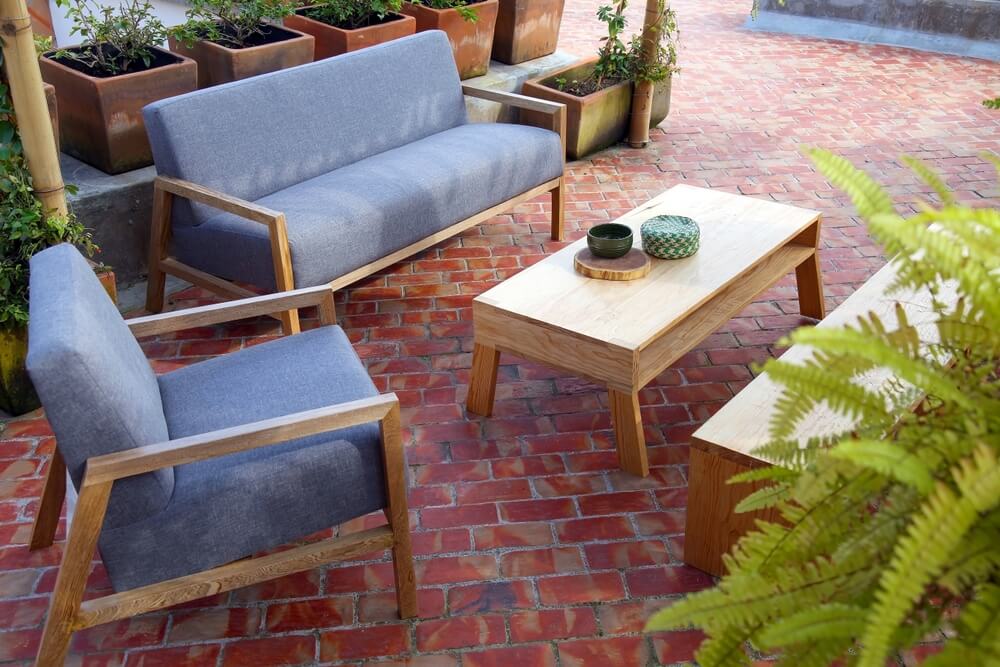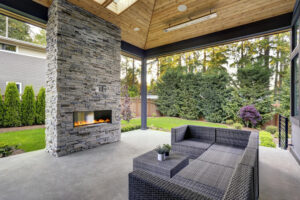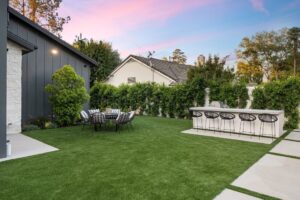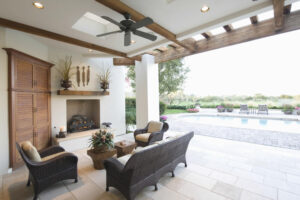In today’s fast-paced world, the concept of indoor-outdoor living has gained significant popularity. People crave a blend of indoor comfort and outdoor beauty, allowing them to enjoy the best of both worlds. With a focus on seamless indoor-outdoor living, this article will guide you on how to create a smooth transition, effortlessly connecting your indoor and outdoor spaces.
Experience the beauty of a seamless indoor-outdoor living space with Cricket Pavers. Enhance your home with our high-quality pavers designed for connecting indoor and outdoor spaces. Contact us today to transform your living areas into a stunning oasis of harmony and style.
Benefits of a Seamless Indoor-Outdoor Living Space

When you embrace the idea of a seamless indoor-outdoor living space, you open yourself up to a myriad of benefits. Firstly, it allows you to enjoy the best of both worlds. Imagine being able to lounge in the cozy confines of your indoor sanctuary while still feeling the refreshing breeze and basking in the natural sunlight. This harmony between indoor comfort and outdoor serenity creates an unparalleled living experience where you can truly immerse yourself in the beauty of nature while maintaining the comforts of your home. When switching from indoor to outdoor becomes easy, you’ll start enjoying your home more than ever.
Planning the Transition
Careful planning is essential to achieve a seamless transition between your indoor and outdoor living areas. Start by assessing both your indoor and outdoor spaces. Consider the layout, existing architectural features, and potential obstacles that may hinder the flow between the two areas. By understanding the unique characteristics of each space, you can create a cohesive layout that bridges the gap and promotes a harmonious connection.
Incorporating suitable furniture and decor is another crucial aspect of the transition. Choose pieces that can seamlessly transition between indoor and outdoor environments, such as weather-resistant furniture and versatile accessories. Selecting items that complement both spaces ensures a unified aesthetic that enhances the overall experience.
Consider Floor Plan Characteristics Before Connecting Indoor and Outdoor Spaces
When creating a seamless transition from your indoor to your outdoor living room, it’s essential to consider the characteristics of your floor plan. By understanding how your indoor and outdoor spaces connect, you can optimize the flow and ensure a harmonious integration of both environments.
One important consideration is the concept of an indoor-outdoor room. This refers to a space that blurs the boundaries between indoors and outdoors, creating a seamless transition between the two. Assess your floor plan to identify areas where you can establish an indoor-outdoor room. This could be a patio adjacent to your living room or a deck that extends from your kitchen area. By strategically locating these spaces, you can facilitate effortless movement between indoors and outdoors.
In the process of connecting indoor and outdoor spaces, evaluate the areas where you’ll be switching from indoor to outdoor. These transitional points play a vital role in the overall flow of your living spaces. Take note of doors, windows, or any architectural features that facilitate the transition. Consider whether these entry points can be expanded or modified to enhance the connection. For example, installing sliding glass doors or folding panels can create a wide and unobstructed passage, making it easy to switch from indoor comfort to outdoor serenity.
Additionally, think about how the floor plan can accommodate the activities and functionalities you envision for your indoor-outdoor space. If you enjoy cooking and entertaining, ensure the transition from the indoor kitchen to the outdoor dining area is smooth and convenient. This might involve positioning the indoor and outdoor spaces in close proximity or creating a pass-through window to facilitate easy food and beverage service.
By carefully considering the floor plan characteristics, you can create a blueprint that supports the seamless transition and connects your indoor and outdoor living spaces. Whether it’s an open-concept layout or thoughtful design modifications, the goal is to achieve a harmonious flow that allows you to switch from indoor to outdoor effortlessly.
Creating a Deck-to-Patio Transition
One popular way to create a smooth transition is by connecting a deck and a patio. When choosing materials, opt for those that harmonize with the overall design of your home while withstanding outdoor elements.
This deck-to-patio transition serves as a bridge, unifying your indoor and outdoor areas. Using materials that align with your vision, such as similar flooring or complementary color schemes, can achieve a seamless connection that enhances the overall aesthetic appeal.
Incorporate landscaping elements strategically further to emphasize the connection between your indoor and outdoor spaces. Integrate plants, shrubs, or even a small garden along the path from your deck to the patio. This green corridor adds natural beauty and acts as a visual cue, guiding your eyes and reinforcing the seamless transition.
Practical Tips for a Seamless Transition
Maximizing natural light is critical for creating a seamless transition. Consider installing large windows or glass doors that allow an unobstructed view of the outdoors. This brings the beauty of nature inside and blurs the boundaries between the two spaces. By harnessing natural light, you can create an inviting atmosphere that seamlessly connects your indoor and outdoor areas.
Extend color schemes and textures from your indoor space to the outdoors. Choose outdoor furnishings, cushions, and accessories that complement the interior palette. This continuity of colors and textures reinforces the sense of unity and creates a cohesive flow between the two environments.
Additionally, utilize visual cues and flow patterns to guide the transition. Arrange furniture and decor in a way that encourages movement from indoors to outdoors. Clear pathways and open spaces allow for easy navigation, making the transition feel effortless and intuitive.
Enhancing Connectivity Between Indoor and Outdoor Spaces

One effective way to enhance connectivity is by installing glass doors or large windows. These transparent barriers dissolve the boundaries, visually merging the two spaces. Whether open or closed, they provide a constant connection to the outdoors, allowing you to enjoy the beauty of nature throughout the year.
Implementing versatile furniture options is another strategy to bridge the indoor-outdoor gap. Opt for pieces that are designed for both indoor and outdoor use. Consider convertible sofas, weather-resistant ottomans, and stylish dining sets that seamlessly transition from indoor gatherings to outdoor entertaining.
To add an element of entertainment, incorporate technology that can be enjoyed both indoors and outdoors. Install outdoor speakers or a weatherproof television, creating a multi-functional space for relaxation, parties, or family gatherings. The integration of technology ensures that you can switch from an indoor to an outdoor setting without sacrificing modern conveniences.
Give It a Shot
Creating a seamless transition from your indoor to your outdoor living room is an art that requires thoughtful planning and execution. By embracing the concept of seamless indoor-outdoor living, you can enjoy the best of both worlds, enhancing your overall living experience. Remember to design a cohesive layout, select suitable furniture and decor, and incorporate practical tips such as maximizing natural light and utilizing visual cues.
In your quest to connect your indoor and outdoor spaces, the possibilities are endless. Embrace the beauty of a deck-to-patio transition, where the right materials and landscaping elements can highlight the seamless connection. Let the flow of indoor and outdoor spaces harmonize, creating a haven that genuinely represents your lifestyle and brings joy to all who experience it.
Or, contact Cricket Pavers and let the pros handle business.




